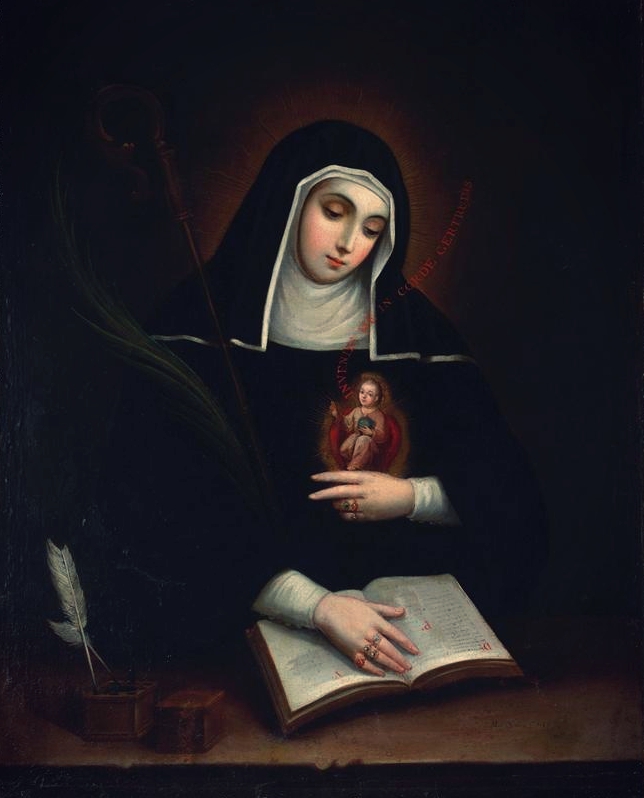THE NOW WORD ON MASS READINGS
for April 11th, 2017
Tuesday of Holy Week
Liturgical texts here

Behold, a whirlwind of the Lord has gone forth in fury—
A violent whirlwind!
It will fall violently on the head of the wicked.
The anger of the Lord will not turn back
until He has executed and performed
the thoughts of His heart.
In the latter days you will understand it perfectly.
(Jeremiah 23:19-20)
JEREMIAH’s words are reminiscent of the prophet Daniel’s, who said something similar after he too received visions of the “latter days”:
As for you, Daniel, keep secret the message and seal the book until the end time; many shall fall away and evil shall increase. (Daniel 12:4)
It is as if, in the “end time,” God will reveal the fullness of His divine plan. Now, nothing new will be added to the Church’s Public Revelation given to us through Christ in the “deposit of faith.” But, as I wrote in The Unfolding Splendor of Truth, our understanding of it can certainly deepen and deepen. And this has been the key role of “private revelation” in our times, such as in the writings of St. Faustina or Servant of God Luisa Piccarreta. [1]cf. Turn on the Headlights
For example, in a powerful vision, St. Gertrude the Great (d. 1302) was allowed to rest her head near the wound in the Saviour’s breast. As she listened to His beating Heart, she asked St. John, the beloved Apostle, how it was that he, whose head had reposed on the breast of the Savior at the Last Supper, kept complete silence about the throbbing of  the adorable Heart of his Master in his writings. She expressed regret to him that he had said nothing about it for our instruction. The Apostle replied:
the adorable Heart of his Master in his writings. She expressed regret to him that he had said nothing about it for our instruction. The Apostle replied:
My mission was to write for the Church, still in its infancy, something about the uncreated Word of God the Father, something which of itself alone would give exercise to every human intellect to the end of time, something that no one would ever succeed in fully understanding. As for the language of these blessed beats of the Heart of Jesus, it is reserved for the last ages when the world, grown old and become cold in the love of God, will need to be warmed again by the revelation of these mysteries. —Legatus divinae pietatis, IV, 305; “Revelationes Gertrudianae”, ed. Poitiers and Paris, 1877
In his encyclical on “Reparation to the Sacred Heart,” Pope Pius XI wrote:
And thus, even against our will, the thought rises in the mind that now those days draw near of which Our Lord prophesied: “And because iniquity hath abounded, the charity of many shall grow cold.” (Matt. 24:12). —POPE PIUS XI, Miserentissimus Redemptor, n. 17; May, 1928
Those words were like a “divine cue” that, six years later, sparked the “language of these blessed beats of the Heart of Jesus” in the revelations of Divine Mercy that Jesus gave to St. Faustina. With one heartbeat, Jesus warns, and with the other, He beckons:
In the Old Covenant I sent prophets wielding thunderbolts to My people. Today I am sending you with My mercy to the people of the whole world. I do not want to punish aching mankind, but I desire to heal it, pressing it to My Merciful Heart. I use punishment when they themselves force Me to do so; My hand is reluctant to take hold of the sword of justice. Before the Day of Justice I am sending the Day of Mercy. —Jesus to St. Faustina, Divine Mercy in My Soul, Diary, n. 1588
In today’s first reading, the prophet Isaiah, whom the Church Fathers say foretold of an “era of peace” on earth before the end of the world, said:
It is too little, he says, for you to be my servant, to raise up the tribes of Jacob, and restore the survivors of Israel; I will make you a light to the nations, that my salvation may reach to the ends of the earth. (Ch 49)
It is as if the Father is saying to the Son, “It is too little for You to only reconcile the relationship of My creatures with Me by Your Blood; rather, the entire world must be filled with your Truth, and all the coastlands know and worship the Divine Wisdom. In this way, your light will withdraw all creation from the darkness and restore the Divine Order in men. And then, will come the end.”
And this gospel of the kingdom will be preached throughout the world as a witness to all nations, and then the end will come. (Matthew 24:14)
 Enter: the writings of Luisa Piccarreta on the Divine Will, which are as though “the other side of the coin” to Divine Mercy. If Faustina’s revelations prepare us for the end of this era, Luisa’s prepare us for the next. As Jesus said to Luisa:
Enter: the writings of Luisa Piccarreta on the Divine Will, which are as though “the other side of the coin” to Divine Mercy. If Faustina’s revelations prepare us for the end of this era, Luisa’s prepare us for the next. As Jesus said to Luisa:
The time in which these writings will be made known is relative to and dependent on the disposition of souls who wish to receive so great a good, as well as on the effort of those who must apply themselves in being its trumpet-bearers by offering up the sacrifice of heralding in the new era of peace… —The Gift of Living in the Divine Will in the Writings of Luisa Piccarreta, n. 1.11.6, Rev. Joseph Iannuzzi; this dissertation on Luisa’s writings received the Vatican University’s seals of approval as well as ecclesiastical approval
…at the “end time” the Lord’s Spirit will renew the hearts of men, engraving a new law in them. He will gather and reconcile the scattered and divided peoples; he will transform the first creation, and God will dwell there with men in peace. —Catechism of the Catholic Church, n. 715
All this is to say that we are privileged to live in such an extraordinary moment, foretold by several prophets  thousands of years ago. The word “apocalypse” comes from the Greek apokalupsis, which mean to “uncover” or “reveal.” In that light, the Apocalypse of St. John is not about doom and gloom, but the accomplishment in time of Jesus preparing for himself a holy Bride…
thousands of years ago. The word “apocalypse” comes from the Greek apokalupsis, which mean to “uncover” or “reveal.” In that light, the Apocalypse of St. John is not about doom and gloom, but the accomplishment in time of Jesus preparing for himself a holy Bride…
…that he might present to himself the church in splendor, without spot or wrinkle or any such thing, that she might be holy and without blemish. (Ephesians 5:27)
We are beginning to understand, little by little, the purpose of this Great Storm that has descended upon our generation, this “whirlwind” that the prophet Jeremiah spoke of. It is being permitted by God in order to purify the earth and establish the Kingdom of Christ to the coastlands: a time when His Word will be done “on earth as it is in Heaven.”
In this regard, Jesus and Mary (the “Two Hearts” who both said “yes” to the Father) reveal in their persons a pattern of events or stages of the “latter times.” Jesus shows us the Way that the Church must follow in order to be purified—the Way of the Cross. As my friend, the late Fr. George Kosicki wrote:
The Church will increase the reign of the Divine Savior by returning to the Upper Room by way of Calvary! —The Spirit and the Bride say “Come!”, page 95
…when she will follow her Lord in his death and Resurrection. —Catechism of the Catholic Church, n. 677
As Jesus said to Peter in today’s Gospel: “Where I am going, you cannot follow me now, though you will follow later.” That is because salvation history is not yet complete until the Body of Christ is fully in union with the Head:
For the mysteries of Jesus are not yet completely perfected and fulfilled. They are complete, indeed, in the person of Jesus, but not in us, who are his members, nor in the Church, which is his mystical body. —St. John Eudes, treatise “On the Kingdom of Jesus”, Liturgy of the Hours, Vol IV, p 559
In that regard, Mary is the symbol of this “Bride” and her journey to perfection; she is “the image of the Church to come.” [2]POPE BENEDICT XVI, Spe Salvi, n.50
Mary is totally dependent upon God and completely directed towards him, and at the side of her Son, she is the most perfect image of freedom and of the liberation of humanity and of the universe. It is to her as Mother and Model that the Church must look in order to understand in its completeness the meaning of her own mission. —POPE ST. JOHN PAUL II, Redemptoris Mater, n. 37
What does our mission look like in these “end times”? When Mary said “yes” to God, her fiat brought the Holy Spirit down upon her and the reign of Jesus began in her womb. So too, as is now being more fully revealed in Luisa’s writings, the Church must also give her assent, her “yes”, in order for a “new Pentecost” to come so that Jesus will reign in His saints in what will be a “period of peace” on earth, or what the Church Fathers called a “sabbath rest”:
But when The Antichrist shall have devastated all things in this world, he will reign for three years and six months, and sit in the temple at Jerusalem; and then the Lord will come from Heaven in the clouds… sending this man and those who follow him into the lake of fire; but bringing in for the righteous the times of the kingdom, that is, the rest, the hallowed seventh day… These are to take place in the times of the kingdom, that is, upon the seventh day… the true Sabbath of the righteous. —St. Irenaeus of Lyons, Church Father (140–202 A.D.); Adversus Haereses, Irenaeus of Lyons, V.33.3.4, The Fathers of the Church, CIMA Publishing Co.
…when His Son will come and destroy the time of the lawless one and judge the godless, and change the sun and the moon and the stars—then He shall indeed rest on the seventh day… after giving rest to all things, I will make the beginning of the eighth day, that is, the beginning of another world. —Letter of Barnabas (70-79 A.D.), written by a second century Apostolic Father
So in that regard, Jesus really is coming, [3]cf. Is Jesus Really Coming? but not to reign in the flesh as He came 2000 years ago. Rather, to be definitively “conceived” in the Church so that, through her, Jesus may truly become a light to all the nations.
[Mary] was commissioned to prepare the Bride by purifying our “yes” to be like hers, so that the whole Christ, Head and Body, could offer a total sacrifice of love to the Father. Her “yes” as the public person is now to be
offered by the Church as a corporate person. Mary now seeks our consecration to her so that she might prepare us and bring us to the docile “yes” of Jesus on the Cross. She needs our consecration and not just a vague devotion and piety. Rather, she needs our devotion and piety in the root meaning of the words, ie., “devotion” as the giving of our vows (consecration) and “piety” as the response of loving sons. To grasp this vision of God’s plan to prepare his Bride for the “new age”, we need a new wisdom. This new wisdom is especially available to those who have consecrated themselves to Mary, the Seat of Wisdom. —The Spirit and the Bride Say “Come!”, Fr. George Farrell & Fr. George Kosicki, p. 75-76
And so, as I have said before, it is not enough to simply “know” these things. Rather, we need to internalize them through prayer and consecration to this Woman. We have to enter Our Lady’s school, which we do by “prayer of the heart”: by approaching the Mass with love and devotion, attention and awareness; by praying from the heart, as we would speak to a friend; by loving God, seeking first His Kingdom, and serving Him in our neighbour. In these ways, the Kingdom of God will already begin to reign in you, and the transition from this era to the next will be one of joy and hope, even amidst suffering.
For the sake of the joy that lay before him he endured the cross… (Heb 12:2)
And for Jesus, there too was a refuge beneath the Cross.
My Mother is Noah’s Ark. —Jesus to Elizabeth Kindelmann, The Flame of Love, p. 109; with the Imprimatur from Archbishop Charles Chaput
As this Great Storm becomes more violent and fierce, “you will understand it perfectly,” said Jeremiah. How? Our Lady is the Seat of Wisdom—like that Mercy Seat that once crowned the “ark of the new covenant.” It is in and through Mary “full of grace” that Jesus will give us the Wisdom to pass through this Storm as we take her to be the refuge that she is, by the Father’s will.
In you, O LORD, I take refuge… On you I depend from birth, from my mother’s womb you are my strength. (Today’s Psalm)
RELATED READING
Bless you and thanks to all
for your support of this ministry!
To journey with Mark in the The Now Word,
click on the banner below to subscribe.
Your email will not be shared with anyone.
Footnotes
| ↑1 | cf. Turn on the Headlights |
|---|---|
| ↑2 | POPE BENEDICT XVI, Spe Salvi, n.50 |
| ↑3 | cf. Is Jesus Really Coming? |


